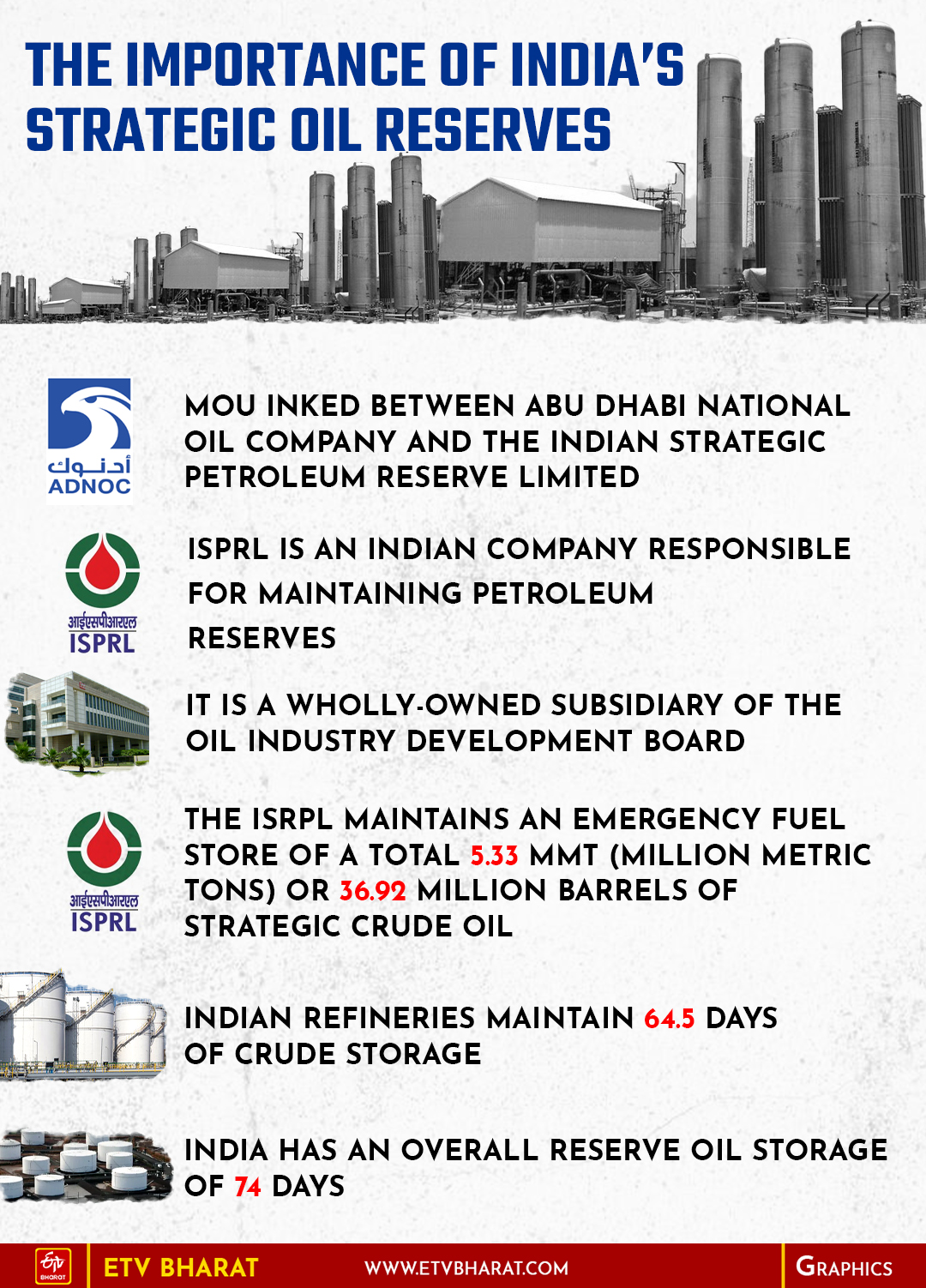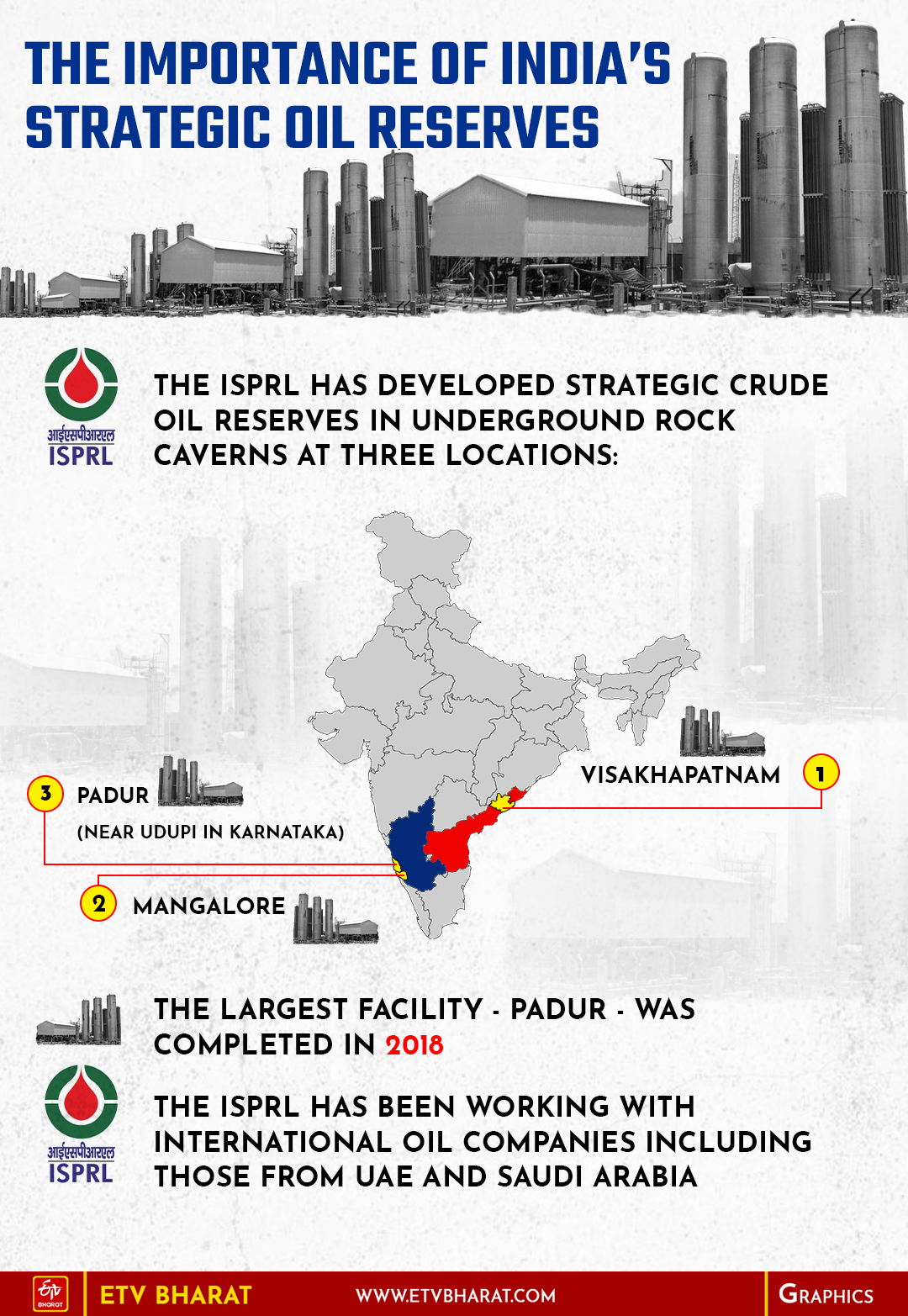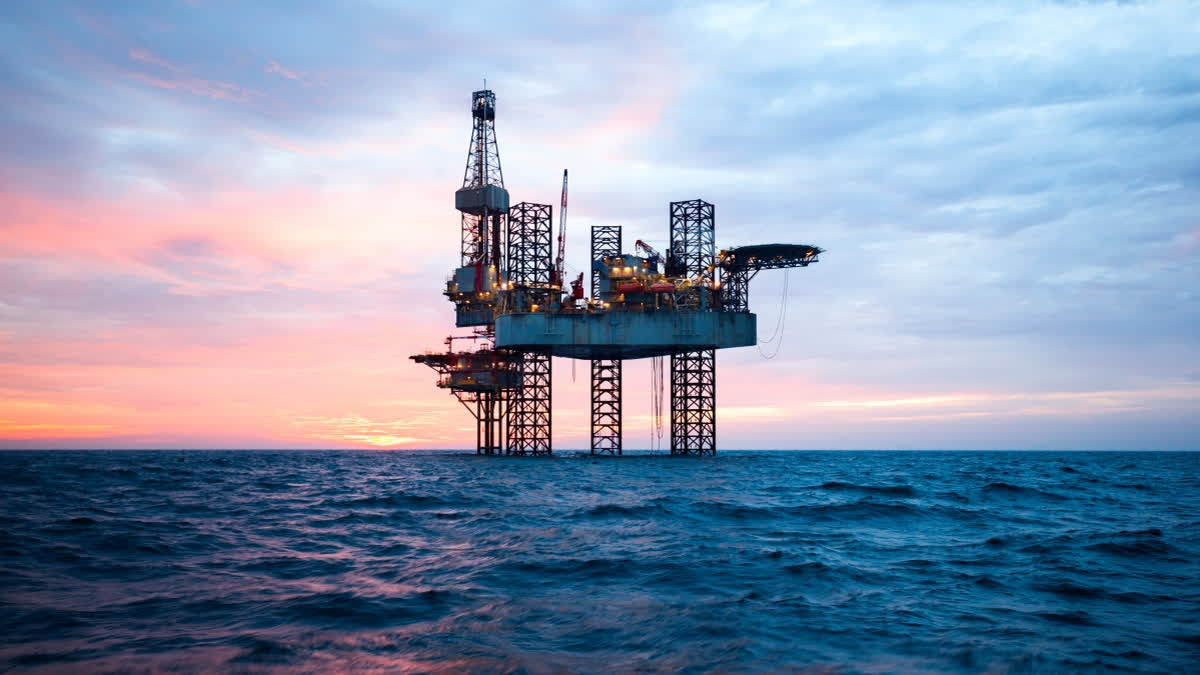New Delhi: Among the agreements signed between India and the United Arab Emirates (UAE) following the bilateral talks between Prime Minister Narendra Modi and Abu Dhabi Crown Prince Sheikh Khaled bin Mohamed bin Zayed Al Nahyan in New Delhi on Monday is a memorandum of understanding (MoU) between the Abu Dhabi National Oil Company (ADNOC) and the Indian Strategic Petroleum Reserve Limited (ISPRL).
“The MoU between ADNOC and ISPRL, inter alia, provides for exploring ADNOC’s participation in additional opportunities for crude storage in India and the renewal of their storage and management agreement on mutually acceptable terms and conditions,” the External Affairs Ministry said in a statement. “This MoU builds on ADNOC’s existing involvement in crude storage at the Mangalore Cavern of ISPRL since 2018.”
What is the ISPRL?
The Indian Strategic Petroleum Reserves Limited is an Indian company responsible for maintaining the country’s strategic petroleum reserves. The ISPRL is a wholly owned subsidiary of the Oil Industry Development Board (OIDB), which functions under the administrative control of the Ministry of Petroleum and Natural Gas.

The ISPRL maintains an emergency fuel store of total 5.33 MMT (million metric tons) or 36.92 million barrels (5.870 million cubic metres) of strategic crude oil, enough to provide 9.5 days of consumption. These strategic storages are in addition to the existing storages of crude oil and petroleum products with the oil companies and serve in response to external supply disruptions.
Indian refiners maintain 64.5 days of crude storage, so India has overall reserve oil storage of 74 days.

Why was the ISPRL set up and what are its objectives?
The Gulf War in 1990 caused a sharp rise in oil prices and a massive increase to India’s imports. During the subsequent 1991 Indian economic crisis, foreign exchange reserves could barely finance three weeks’ worth of imports while the government came close to defaulting on its financial obligations. India was able to resolve the crisis through policies that liberalised the economy. However, India continued to be impacted by the volatility of oil prices. In 1998, the Atal Bihari Vajpayee administration proposed building petroleum reserves as a long-term solution to managing the oil market.
The ISPRL was then set up as a Special Purpose Vehicle in 2005. It operates the storage facilities as custodian of core critical sovereign crude oil reserves apart from operating the facilities as custodian of crude oil for any other entity that the government decides. Its objectives include coordinating the release and replenishment of strategic crude oil stock during supply disruptions through an empowered committee of the Government of India.
The ISPRL plays a critical role in India’s energy security by ensuring that the nation has sufficient reserves to withstand temporary supply shocks due to geopolitical crises, natural disasters, or other unforeseen events.
The ISPRL is responsible for the planning, construction, and maintenance of underground storage facilities for crude oil. It manages the stored crude oil reserves and ensures that they are readily available in case of supply disruptions. The strategic reserves form part of the broader national energy security framework, providing an emergency supply buffer.
Where are India’s strategic petroleum reserves stored?
The ISPRL has developed strategic crude oil reserves in underground rock caverns at three locations in India: Visakhapatnam, Mangalore, and Padur (near Udupi in Karnataka). These locations were chosen strategically based on their proximity to refineries, ports, and transportation infrastructure.
The first strategic storage facility was commissioned in 2015 in Vishakpatnam. It consists of two compartments and has a capacity of 1.33 million metric tonnes (MMT). Operational since 2016, the facility at Mangalore has been developed with advanced safety and environmental standards. It has a capacity of 1.5 MMT.
The largest of the three, the Padur facility was completed in 2018 and plays a crucial role in India's strategic oil storage plan. It has a capacity of 2.5 MMT.
These underground rock caverns are highly secure and environmentally safe, designed to store crude oil for long periods without degradation. Crude oil from these caverns can be supplied to the Indian refineries either through pipelines or through a combination of pipelines and coastal movement. The estimated cost of the project was Rs 2,837 crore based on September 2005 prices. This excluded the cost of filling the crude oil in the caverns.
The crude oil stored in these facilities is generally held as a buffer stock and is released only in extreme emergencies upon government approval. In addition to storing crude oil for strategic purposes, ISPRL also allows foreign companies and Indian oil marketing companies to lease storage space. This arrangement helps in better utilisation of storage facilities and also provides an additional source of revenue.
Recognising the need to expand its strategic reserves, the Indian government has approved the second phase of the strategic petroleum reserves programme, which includes the construction of additional reserves at Chandikhol in Odisha (4 MMT) and a new facility at Padur (2.5 MMT). These projects aim to increase India’s overall strategic reserve capacity significantly and enhance the country’s readiness against potential supply disruptions.
What is the importance of these oil reserves in India’s foreign policy and the UAE-India MoU in this regard on Monday?
The ISPRL has been working with various international oil companies, including those from the UAE and Saudi Arabia, to lease parts of its storage capacity. These partnerships not only enhance India’s strategic reserves but also strengthen international ties, contributing to global energy security.
In 2017, ADNOC, the state-owned oil company of the UAE, became the first foreign entity to store crude oil in India’s strategic petroleum reserves.
ADNOC leased 0.75 MMT of storage capacity at ISPRL’s Mangalore facility, marking a historic milestone in India-UAE energy relations. This agreement allowed ADNOC to store crude oil that could be used by India in case of emergencies, while also allowing ADNOC to sell part of the stored crude oil commercially.
The UAE’s contribution is not limited to leasing storage; it also ensures a steady supply of crude oil for India’s energy needs. This arrangement provides India with access to ADNOC’s vast oil reserves in times of need, bolstering India’s emergency response capabilities. The lease arrangement also involved financial investments by the UAE in India’s strategic infrastructure, helping to offset the costs associated with building and maintaining these storage facilities.



